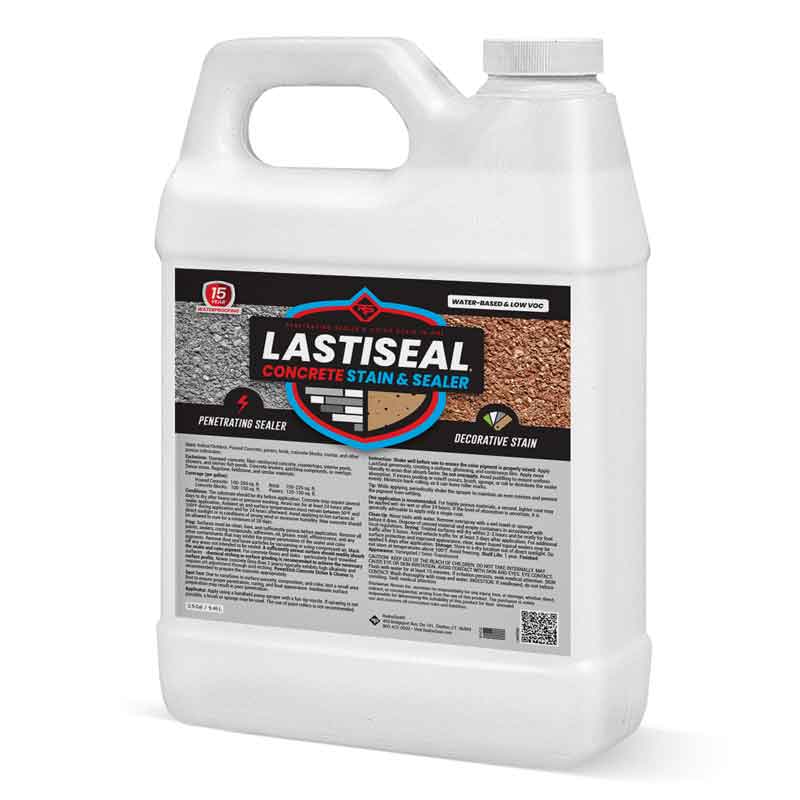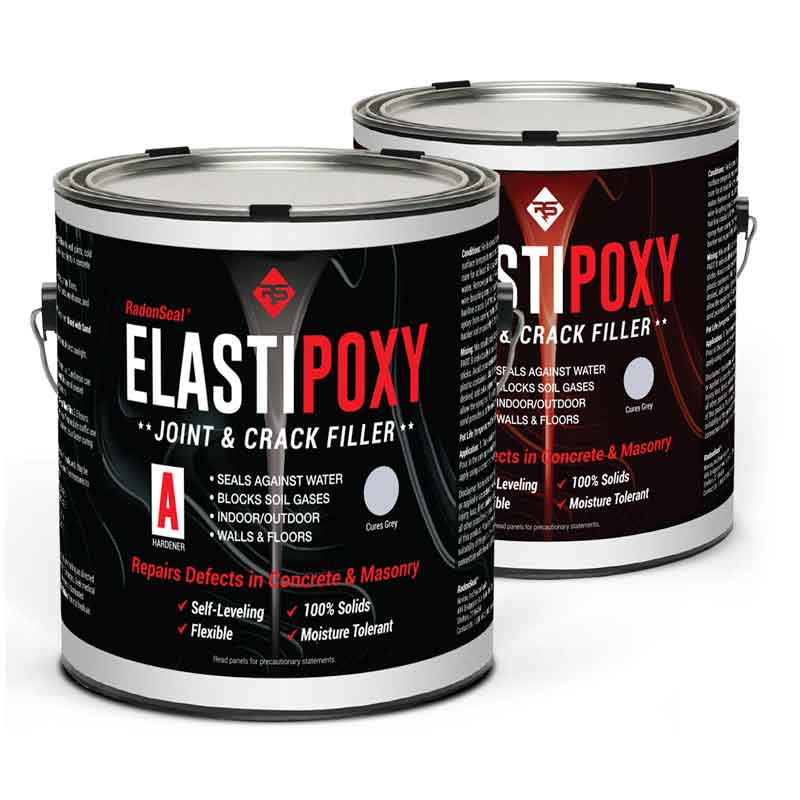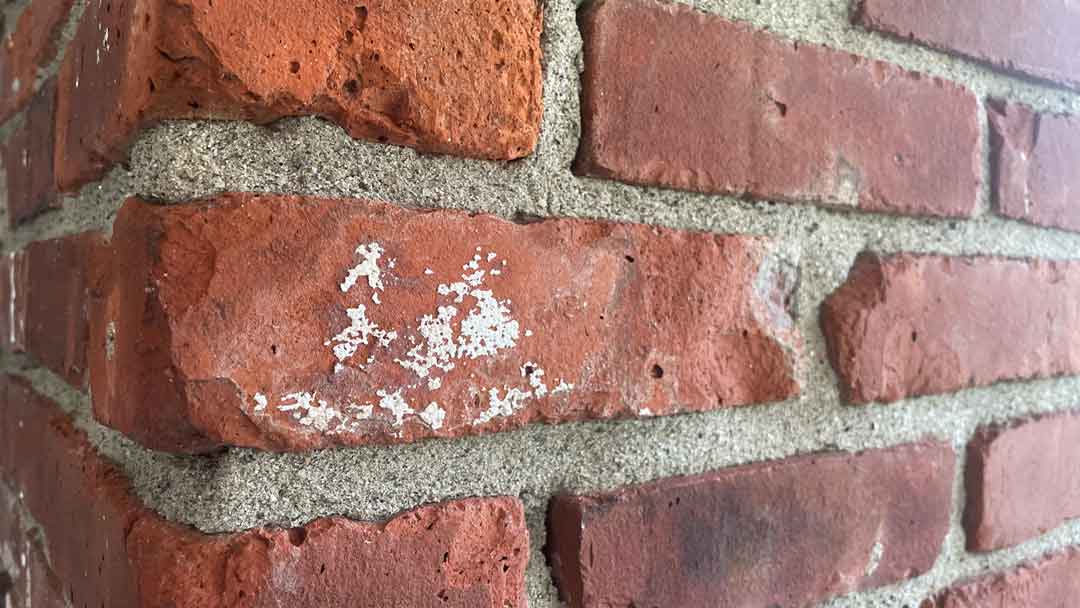
Brick walls and chimneys are durable, but over time they often develop hairline cracks. These small openings may look harmless, yet they can allow water inside, weaken mortar joints, and expand during freeze–thaw cycles. To avoid costly repairs, it’s important to repair cracks in brick walls and chimneys early and then seal the masonry to keep out moisture and weather. This guide explains the best repair methods and sealing steps to protect your brickwork for years to come.
Customer Question:
“I have a brick wall with hairline cracks that let in cold air during the winter. What’s the best way to seal these cracks and protect my brickwork?”
Brick Crack Repair: Why Small Cracks Matter
Small cracks in brickwork may look harmless, but they often lead to bigger problems. Water seeps in, expands during freeze–thaw cycles, and widens the cracks, loosening mortar joints and causing brick to flake. Cracks also let in drafts, raising heating costs.
The good news is that brick crack repair is simple when done early. By filling and sealing small openings, you stop moisture intrusion, improve efficiency, and keep your walls and chimney sound for years.
Chimney Crack Repair: Protecting Against Leaks and Damage
Chimneys face the harshest exposure to rain, wind, and freezing temperatures, making them prone to cracks. Even small gaps in the brick or mortar can funnel water inside, damaging the flue, firebox, or interior walls.
By addressing chimney crack repair early, you prevent leaks, drafts, and costly structural problems. With the right materials, you can fill hairline cracks, restore mortar, and seal the masonry to keep water out and extend the chimney’s life.
How to Repair Hairline Cracks in Brick
Hairline cracks may look minor, but they can let in water and air that gradually weaken brick and mortar. Homeowners have several options when deciding how to repair hairline cracks in brick, depending on whether they need a quick cosmetic fix or a long-lasting structural repair.
Option 1: Polyurethane Caulk (Quick Fix)
Polyurethane or masonry caulk is the fastest and easiest way to fill a crack. It comes in a tube and can be applied with a standard caulking gun. Caulk provides a flexible seal and stops air drafts, but it does not bond strongly to brick or mortar. Over time, UV light and weather exposure can cause it to peel or pull away, so this option is best viewed as a temporary patch.
Option 2: Mortar Patching (Traditional Method)
Another common repair method is to grind open the crack with an angle grinder or masonry chisel, then fill it with fresh mortar. This allows the patching material to lock in, but the process is more labor-intensive and requires color-matching mortar for a seamless look. Mortar repairs are stronger than caulking but can still be prone to cracking if the wall shifts or experiences freeze–thaw cycles.
Option 3: Epoxy-Sand Mix (Strongest Repair)
For a durable, structural repair, use a masonry-grade epoxy like ElastiPoxy. When mixed with clean masonry sand, the epoxy creates a paste that bonds tightly to both brick and mortar. Unlike caulk or mortar alone, epoxy provides a high-strength, flexible bond that resists movement and prevents cracks from reopening. It also penetrates the pores of the masonry, making the repair significantly stronger and longer-lasting.
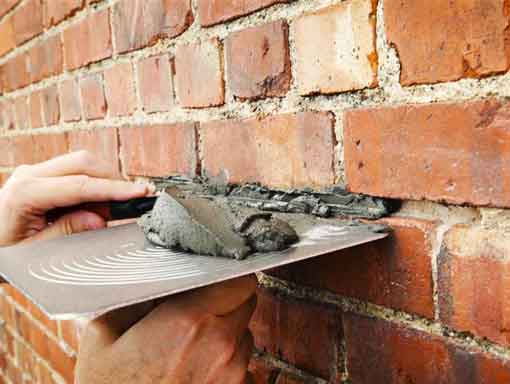
Repointing mortar joints on a brick chimney with fresh mortar and a trowel.
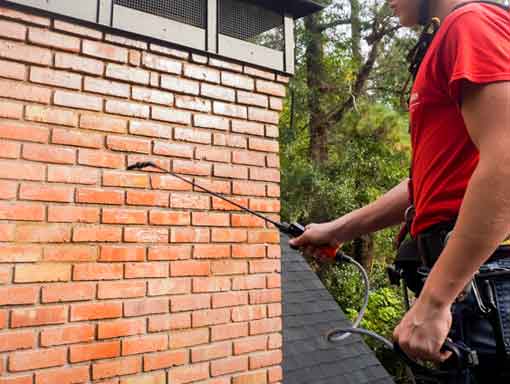
Applying a penetrating sealer to a brick chimney to protect against water and freeze-thaw damage.
Sealing Brick and Mortar to Prevent Future Damage
Repairing cracks will keep water out and can restore strength, but sealing the entire wall or chimney is what truly protects brickwork over the long term. Once water penetrates brick or mortar, it can trigger freeze–thaw damage, surface spalling, efflorescence, and more cracks.
The best way to safeguard masonry is with a deep-penetrating sealer that soaks into the brick and bonds within its pores. Unlike coatings that sit on the surface, penetrating sealers block water from the inside out while still allowing the wall to breathe. This is essential for preventing trapped moisture that could otherwise cause peeling, flaking, or hidden deterioration.
A proven choice is LastiSeal Brick & Concrete Sealer. It penetrates deeply into both brick and mortar, hardens the surface, and creates a permanent water barrier. By strengthening the masonry from within, LastiSeal helps stop further cracking and deterioration while preserving the natural appearance of your wall or chimney.
💡 Tip: Avoid glossy or shiny topical acrylic sealers. These surface coatings may look appealing at first, but they dont last and provide marginal protection. A penetrating sealer like LastiSeal keeps the wall protected while maintaining its natural look.
Long-Term Protection for Brickwork
Cracks in brickwork may seem minor at first, but they can allow water and cold air inside, leading to more serious damage over time. Addressing them early with the right repair method — whether caulk, mortar patching, or epoxy — helps restore strength and stability.
The final step is sealing the masonry so moisture can’t find its way back in. A deep-penetrating sealer keeps brick and mortar dry, reduces future cracking, and extends the life of your walls and chimney. By taking the time to repair cracks in brick walls and chimneys and then sealing the surface, homeowners can ensure their masonry stays strong and durable for decades.
LastiSeal Brick & Concrete Sealer
Buy Direct
Get It on Amazon
ElastiPoxy Joint & CrackFiller Kit
Buy Direct
Get It on Amazon
